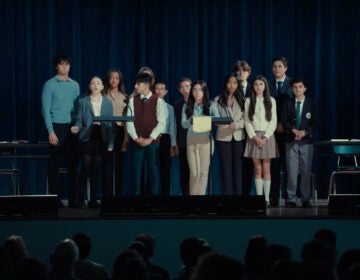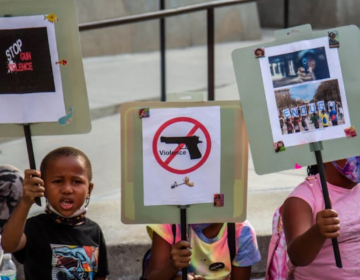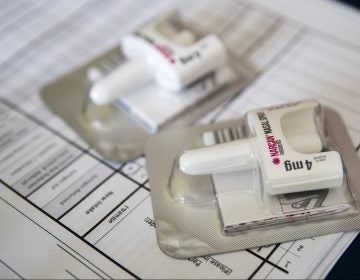The price of a gunshot: Health impacts and the cost of violence on Latinos
Gun violence suffered by Latinos in the U.S. has increased. Survivors often face a difficult road ahead that includes medical bills and accessing mental health resources.
Listen 10:08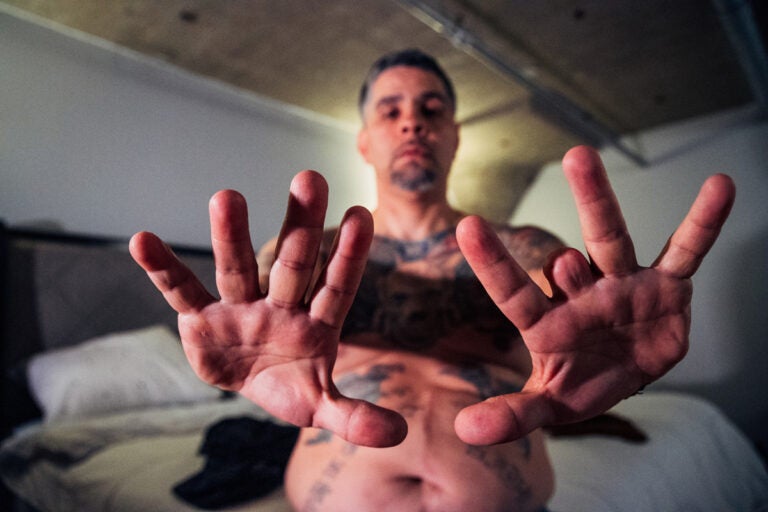
Diego López displays his hands, the left hand bearing the absence of a finger lost to a bullet. (Aníbal Martel for palabra)
This story was co-published with palabra, an initiative of the National Association of Hispanic Journalists. The project was supported by the journalism non-profit the Economic Hardship Reporting Project and The Commonwealth Fund.
Haz clic aquí para leer este reportaje en español.
The first time that Diego López was shot was in the 1990s. His body was shielded from the bullet, thanks to his leather jacket. He went to the hospital but skipped treatment, fearing he would be questioned by the police. He was so skinny then that he managed to flee by hopping through an emergency room window.
A teenager at the time, López was a Latin Kings member, actively involved in bloody gang wars in Hartford, Connecticut.
Despite his attempt to dodge the police, cops showed up at his place weeks later. This time, he wasn’t arrested and no charges were filed. But eventually he served 16 years in prison for selling drugs and car theft.
Now, at age 50, he has nine scars where bullets pierced his body and one missing finger, after being shot in four separate incidents — two as a teen, and two as an adult.

“I got surgeries all over my body from gunshot wounds,” López says. He’s trying to process how a life of hardship, growing up in a broken home without a father figure, repeated episodes of domestic violence and intergenerational trauma led him down this path.
Latinos are disproportionately impacted by gun violence, young men in particular. Between 2014 and 2020, the number of Hispanics killed by guns rose 66%, while overall gun deaths nationally rose 34%, according to Giffords, an organization working to end gun violence in the United States.
Other organizations affirm Giffords’ claim. The homicide rate for Hispanics in the U.S was higher than for whites in 2021, according to the Violence Policy Center. Nearly 75,000 Hispanics were killed by guns between 2001 and 2021, a trend mainly driven by interpersonal violence –– not mass shootings. Of those 75,000, 47,119 were gun homicide victims and 23,686 were gun suicides, 1,184 died in unintentional shootings. Between 2020 and 2021, Latinos saw a 14% increase in firearm suicides, compared to a 7% increase among whites.
Yet little is known about the specific health impact and financial toll that gun violence takes on Latinos, both at the individual and at the community level. While there is a need for more official data, local and non-profit organizations offer important on-the-ground knowledge and have a profound grasp of the problem’s magnitude.
López is now past his legal troubles and works in the community through COMPASS Youth Collaborative, a Hartford-based non-profit. The same organization that offered him a lifeline 13 years ago, a rare opportunity to repair some of the damage he once inflicted on his community by helping youth with similarly rough upbringings.

The organization serves about 230 of the city’s estimated 800 children and young adults who have been impacted by incarceration or the justice system — mostly from Black and Brown neighborhoods. These are youths falling through society’s cracks because of gun violence. Of the program’s youth participants, 69% reported having lost a family member or a friend to this type of violence.
In cities, gun homicides tend to affect young Black and Latino men in historically underserved neighborhoods, according to Everytown for Gun Safety, the nation’s largest gun violence prevention organization.
Day and night, López takes to the streets to Hartford’s most dangerous neighborhoods in search of youth who are most impacted by violence. Some carry weapons, others face domestic abuse. For many, a bad decision or dangerous lifestyle can land them in jail or cost them their lives.
López’ goal as a COMPASS peacebuilder is to establish life-changing relationships with high-risk youth and recruit them into the organization’s four-year program, which offers medical and mental health support and a path toward education and future employment.
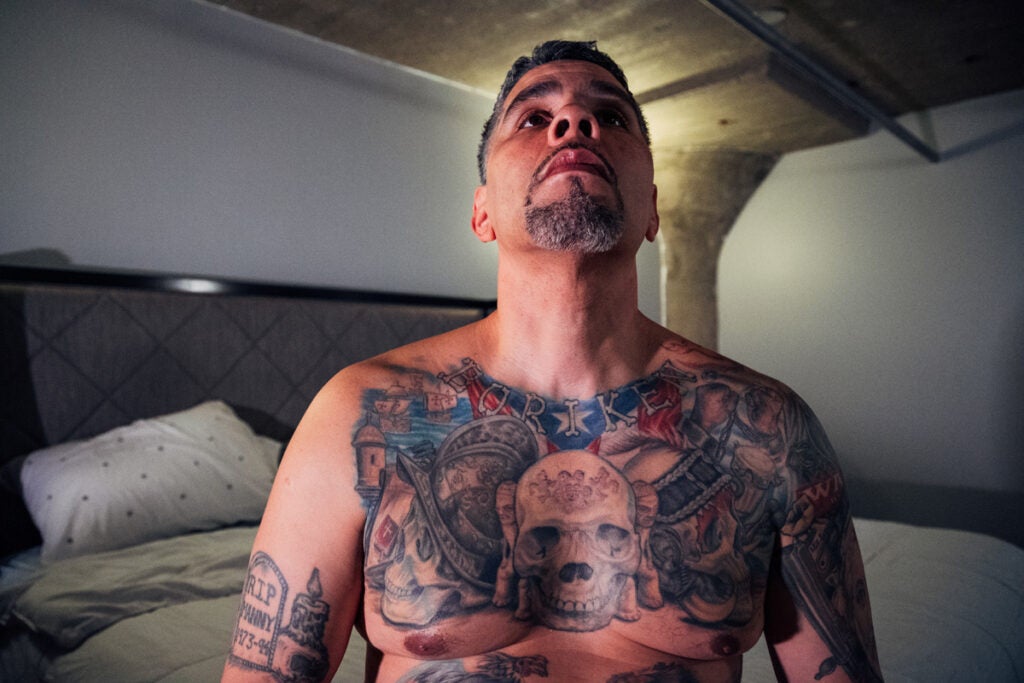
“(The youth) are really in survival mode, and we’re looking to work with them to de-escalate that and teach them a different way,” says Jacqueline Santiago Nazario, the nonprofit organization’s CEO. “I do believe that violence is a public health issue, as is poverty.”
Half of the program’s staff members are Latinos to ensure fluid communication with the youth — some of whom are Latin American immigrants. Peacebuilders show up in hospitals to provide young gun violence survivors with bedside assistance, address their needs, and prevent retaliation or acts of revenge that will further escalate the violence — the kind of aid and guidance that López never had as a teenager.
Initially, survivors and youth tend to keep their guard up and are reluctant to talk to López or other COMPASS staff and volunteers. It usually takes three months for the team members to gain their trust. But sometimes, something as urgent as treating wounds and preventing infections is at stake, so peacebuilders can’t wait that long. They have to be persuasive and relentless.
“You tend to think you don’t need medical treatment,” López warns young people. He says that, of the survivors who do seek medical care, many skip follow-up appointments “out of ignorance.”
“We’ve had instances where bullets have fallen out of people’s legs, you know, in the shower … and they don’t have any idea what to do,” Santiago Nazario adds.
Here’s where López’s lived experiences become crucial for his mentees.

López knows first-hand the importance of having insurance and access to adequate medical care, which became especially important the fourth time he was shot. He underwent intestine repair surgery and had one finger amputated. After he was discharged, a nurse came to his home to clean his wounds and show him how to pack them with gauze. Shortly after, he and his family became solely responsible for his in-home medical care –– a situation that didn’t sit well with him.
“There’s no real care in that,” López says.
“(The nurses) come by if you do get some wound care, right? They might come by once a week, but you have to do it for yourself, with your family, the other three times a week. So then if you leak out more, then you are supposed to and you need to change, you need to do it yourself,” López says.
Today, through a partnership with the University of Connecticut’s care provider, UConn Health, COMPASS Youth Collaborative helps secure in-home services for individuals who cannot afford further hospital treatment. That means a young boy whose family experienced financial hardship without insurance or medical supplies could access proper, safe wound cleaning care.
“That’s like the most basic human need for someone that has been shot: to keep their wounds clean from being infected,” López says.
COMPASS also supports survivors’ mental health needs with a team of social workers. Their cognitive behavioral therapy model enables youth to examine the relationship among their thoughts, emotions and actions so they can recognize their triggers, self-regulate and address compounded trauma. Santiago Nazario explains that, during the four-year program, 80% of youth show improvement in their lives.
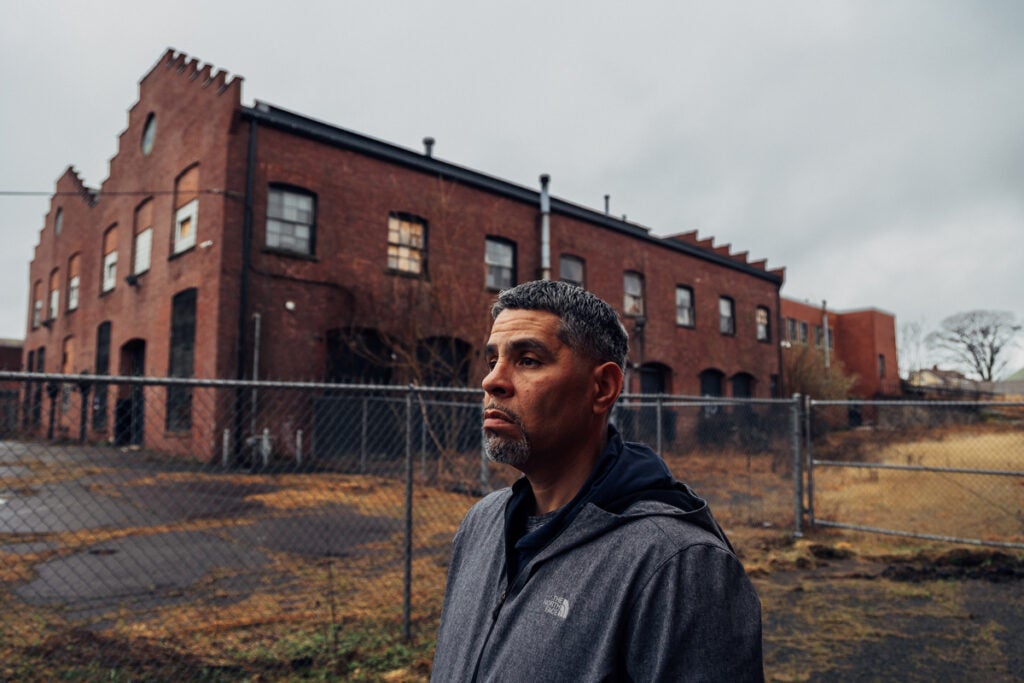
Subscribe to The Pulse
The price of gun violence
The financial cost of gun violence can be astronomical. López’s fourth gunshot wounds and surgeries resulted in close to $100,000 in billing to his insurer. The deductible he had to pay left him in a tough money spot, he recalls.
While health care costs vary by type of injury and treatment length, Santiago Nazario says she has seen bills of $200,000 and higher.
“Money becomes the barrier to mental health and physical health for our Latino community, and it’s heartbreaking,” Santiago Nazario says.
According to a 2022 national survey, 40% of gun violence survivors needed financial assistance for medical expenses and 25% for home health care. According to a 2017 study, the average cost for patients arriving at the ER with gunshot-related injuries was $5,254 a year; for inpatient treatment, charges averaged $95,887. And expenses don’t end after the acute care. Medical spending increases by almost $30,000 during the first year following a gunshot injury — four times higher than medical spending of patients without firearm injuries.
For those who have lost a relative to gun violence, the ripple effects persist far beyond the tragic event and the emotional impact. They include the economic burden of funeral and cremation costs, potential loss of family income, and lack of financial resources to access needed mental health support for surviving relatives.
This reality came crashing down on the Rodrigues family after their son, David Rodrigues, was shot at age 27 in a road rage incident in Paradise Valley, Arizona, 45 years ago. He was left quadriplegic and abandoned by his first wife, David’s sister, Helen Rodrigues, says. Sixteen years later, he died by suicide.
The shooting affected every facet of David’s family’s life. His sister, Helen, was in college at the time and changed career paths from marketing and sales to social work to help disabled individuals. David’s parents spent nearly nine months accompanying him at the intensive care unit before he was moved to a rehabilitation facility.
“We were very fortunate. David was working in a hospital as a respiratory therapist so he had health insurance,” says Helen.
The insurance, however, only paid 80% of the medical bills, which exceeded $1 million. With a disability and facing a huge financial burden, David lost his job and home and moved in with his parents in California.
“My parents had to drop their whole lives to take care of their disabled adult son,” Helen says.
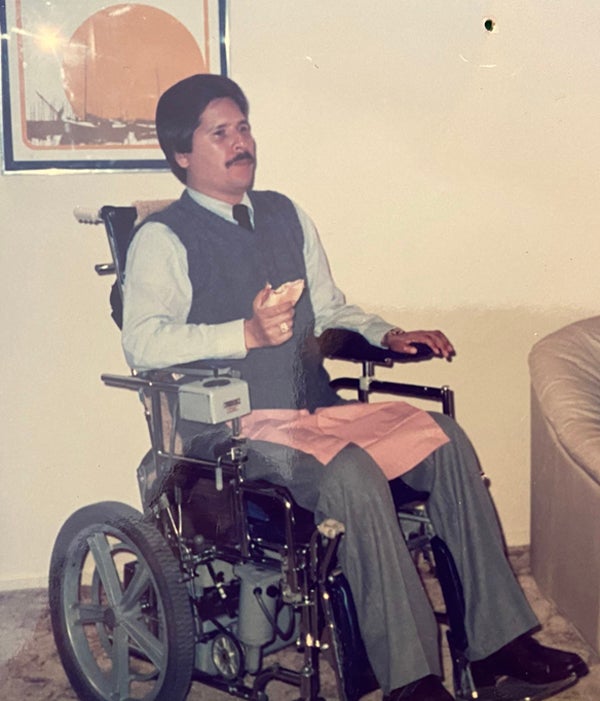
David’s father, who was near retirement, worked longer hours to cover outstanding medical debt, buy a van and build a ramp. At some point, David did earn disability benefits and enrolled in publicly-funded health care. The latter program, however, did not cover counseling services at the time, Helen adds. The family could not afford mental health support without creating hardship for them, so the entire family was left to cope with unresolved trauma on their own.
“We all needed counseling because we didn’t talk about it, and our lives were so profoundly different,” Helen says. “We were left entirely alone. There were no community organizations. There was no victims’ compensation. There was nothing like that at the time.”
Helen has volunteered at Everytown Survivor Network for years. Looking back, she wonders how different her family’s fate would have been had they had the support and resources that nonprofits and community organizations provide today, particularly mental health services.
“My brother might not have killed himself after 16 years,” she says. “My mom died of pancreatic cancer at 63, eight years after David got shot, you know? Would my mother have lived a longer life if she didn’t have this incredible stress?”
The fact that the Rodrigues family and Diego López were impacted by interpersonal violence –– instead of a mass shooting –– poses limits to how much aid and assistance they are entitled to from federal programs, if they qualify for any at all. Additionally, access to state-run victims’ compensation funds often requires survivors to cooperate with law enforcement agencies, and the applications can be burdensome. This is where nonprofits and community organizations can step in to provide critical assistance and facilitate the application process.
“They have to complete 12 pages of paperwork to receive $6,000 for funeral expenses,” says Abigail Hurst, Director of Trauma-Informed Programs at Everytown for Gun Safety. “That’s a hurdle to their healing.”
Experts also warn that cultural dynamics and belief systems, among some Latinos, can also be barriers to seeking help. Stigma attached to seeking mental health support is a powerful silencer, especially when a suicide has occurred in the family. Individuals struggling with mental health issues often skip counselors, medical diagnosis and potential treatments out of fear of what others may think.
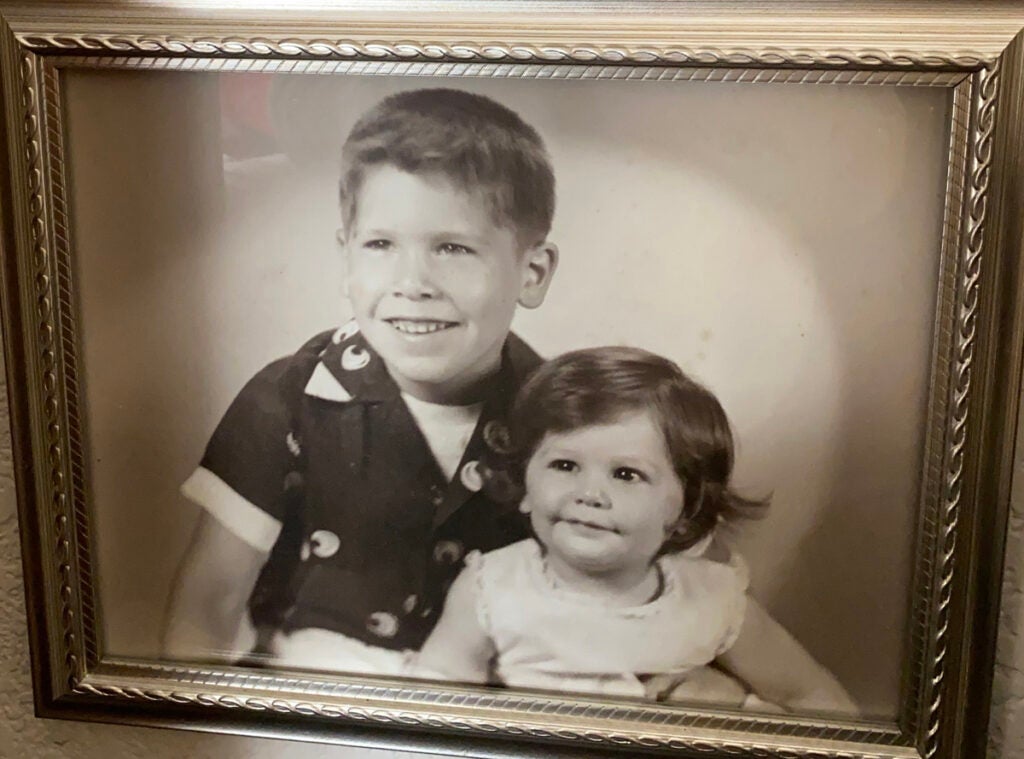
Through her experience with survivors, families and trauma, Silvia Villarreal, who directs research translation at Johns Hopkins University’s Center for Gun Violence Solutions, has come to believe that “we (Latinos) are not culturally ready to seek those (mental health) services.”
Other factors that make Latinos less likely to reach out for assistance, she says, include language barriers or a lack of trust in government institutions and law enforcement agencies. Anti-immigration policies and systemic racism, she argues, lead to intergenerational trauma.
Villarreal advocates for education campaigns to de-stigmatize mental health support among Latinos, and take preventative steps like storing guns securely in homes to minimize the risk of accidents and tragedies.
This story is from The Pulse, a weekly health and science podcast. Find it on Apple Podcasts, Spotify, or wherever you get your podcasts.
Support for WHYY’s coverage of health equity issues comes from the Commonwealth Fund.
WHYY is your source for fact-based, in-depth journalism and information. As a nonprofit organization, we rely on financial support from readers like you. Please give today.




